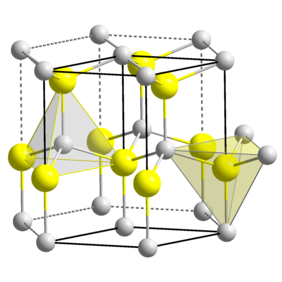Producing sustainable and environmentally friendly fuels has been one of the main interests of scientific research for many years. Scientists have come up with many effective solutions to achieve this goal. One of the most promising technologies is harvesting solar energy with the help of semiconductors which can initiate surface electrochemical reactions. This kind of reaction needs extremely stable and active catalysts, particularly when molecules are to be split into hydrogen and oxygen. Several catalysts have been identified as potential candidates for hydrogen conversion. To industrialize photocatalytic hydrogen production, however, several problems still remain to be solved by science.
Now (2019), scientists at Brookhaven National Laboratory have discovered a method to improve the activity of zinc oxide nanowire catalysts, which are widely applied in photosynthetic hydrogen conversion processes. They took 500-nanometer-long but relatively thin (40 to 50 nanometres) wire-looking nanostructures of zinc oxide and coated the surface with an ultra-thin film of titanium dioxide, which acted as both a catalyst and a protective layer. The scientists chose nanowire catalysts as they have a large surface for light absorption and zinc oxide has the ability to absorb ultraviolet light and has high electron mobility. The subsequent coating of these nanowires with ultra-thin films of titania enhanced these properties and boosted reaction efficiencies by 20%. To prepare the surface of the nanowires for the titania coating, the scientists combined thermal annealing and low-pressure plasma sputtering. For the thermal annealing, they heated the nanowires in an oxygen environment to remove defects and contaminants; for the plasma sputtering, they bombarded the nanowires with energetic oxygen gas ions (plasma), which released oxygen atoms from the ZnO surface.
Research on hydrogen production, with the help of solar energy and zinc oxide catalysts, has been conducted for many years. In 2013, scientists discovered how conformal coating of an ultra-thin (∼1 nm) titania (TiO2) shell over a ZnO nanowire array allowed it to operate stably as a water splitting photoanode in a strongly alkaline solution. In the application, they used a thin (1 nm) TiO2 shell which caused a notable improvement to PEC water splitting efficiency, mainly by means of passivation of surface states that trapped the highly energetic photoholes in the ZnO valence band. They continued with further removal of trap states using oxygen plasma treatment and oxidative thermal annealing and obtained the then highest quantum yield for PEC water splitting using a ZnO-based photoanode.
In 2016, experiments were carried out on the effectiveness of utilizing an ultra-thin angstrom thick shell layer on photocatalytic performance of the TiO2 nanowire (NW) core. The core-shell heterojunction was generated by a combination of hydrothermal growth of a single crystalline TiO2 NW core and an atomic layer deposition (ALD) of a ZnO shell layer. ALD was achieved by self-limiting sequential surface reactions from at least two gas-phase molecular precursors. The scientists demonstrated that conformal coating of the ZnO shell layer by a couple of ALD cycles, wrapped around the TiO2 core, had a great impact on the photocatalytic reactions. The existence of just 1 cycle ZnO shell layer was able to improve the catalytic performance of the NW array significantly.
Zinc oxide catalysts with titania coating have certain advantages over normal zinc oxide catalysts. They do not easily suffer corrosion as the catalyst does not undergo light-induced chemical reactions. This improves catalytic activity. Light-induced corrosion, or photocorrosion, occurs when the catalyst itself is subject to chemical reactions via charge carriers (electrons and “holes,” or missing electrons) generated by light excitation. Nanowires have very good catalytic properties because they offer a large surface area for absorbing light, and ZnO is an earth-abundant material that strongly absorbs ultraviolet light and has high electron mobility. However, by themselves, ZnO nanowires do not exhibit high enough catalytic activity or stability for the water-splitting reaction. Coating them with ultra-thin films of titania enhances activity and stability to boost reaction efficiency by 20 percent compared to conventional ZnO nanowires.
The next step to improve the performance of ZnO nanowire catalysts will be to extend the research to materials relevant to quantum information science (QIS). Scientists hope that the emerging field of QIS will help them understand the strange behaviours and interactions that happen at ultra-small scales better and eventually enable large-scale application of ZnO nanowire catalysts.
